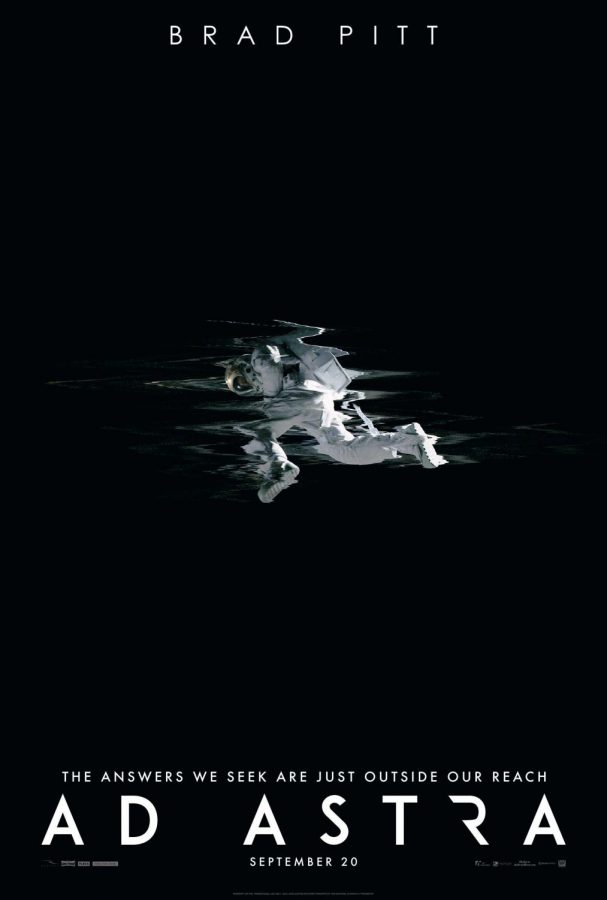Review: “Ad Astra” is a visually stunning existential tale
October 4, 2019
“Ad Astra” is a visually ambitious spectacle anchored by a thematically-nuanced story.
Set in a near future where space colonization is commonplace, Brad Pitt stars as Roy McBride, an astronaut dispatched on a mission to locate his father Clifford, played by Tommy Lee Jones. The elder McBride, long presumed dead after an ill-advised space mission probing for intelligent life outside the solar system years ago, is now believed to be stuck in his damaged spaceship near Neptune, which now emits momentary power surges that threaten the survival of the nearby planets. It’s up to his son to embark on a harrowing journey through the unforgiving deep space to save both his father and mankind in general, in yet another take on Joseph Conrad’s classic tale “Heart of Darkness”.
Pitt delivers in his role as a successful but emotionally distant spaceman, reminiscent of Ryan Gosling’s performance as Neil Armstrong in “First Man”. His subtle performance, aided by voice-overs that provide glimpses into his inner thoughts, offers a sense of human connection as the initially calm and collected astronaut slowly unravels his torment in the search for his father. While most directors of sci-fi films succumb to documenting the sparse universe rather than its inhabitants, James Gray succeeds in keeping “Ad Astra” consistent as an intimate character study on Roy and his journey.
There are lots of philosophical themes to unpack within “Ad Astra”. It can be a religious allegory focusing on man’s quest to find God in the midst of disasters caused by him. It can also be an examination on fatherhood and how children can become like their fathers, as evidenced by Roy’s tumultuous relationship with his father. The film may risk veering into B-movie territory with its corny take on fatherhood, but there is no denying its pulpy entertainment value.
The film itself is visually stunning, which mostly stays true to Gray’s vision for the movie as “the most realistic depiction of space ever.” It might be a bold claim, but the rich cinematography from “Interstellar” alum Hoyte van Hoytema begs to differ. The moon is portrayed as a tourist trap complete with a Subway, while the planet Mars is depicted as a barely hospitable wasteland with human inhabitants living in it. The distinct color palette of each planet as well as the intolerable space beyond is so mesmerizing that the viewer feels closely included in Roy’s journey.
In terms of pacing, “Ad Astra” is more like “Solaris” and “2001: A Space Odyssey” than “The Martian” and “Gravity”. In other words, it takes its time unraveling its story. While there are some thrilling action set pieces, movie viewers expecting good old action all around will have their collective patience tested. But the final act is worth the events that lead to their inevitable resolution.
All in all, “Ad Astra” is an unforgettable existential tale of longing for fulfillment in the weightless wonder of deep space.
9/10








